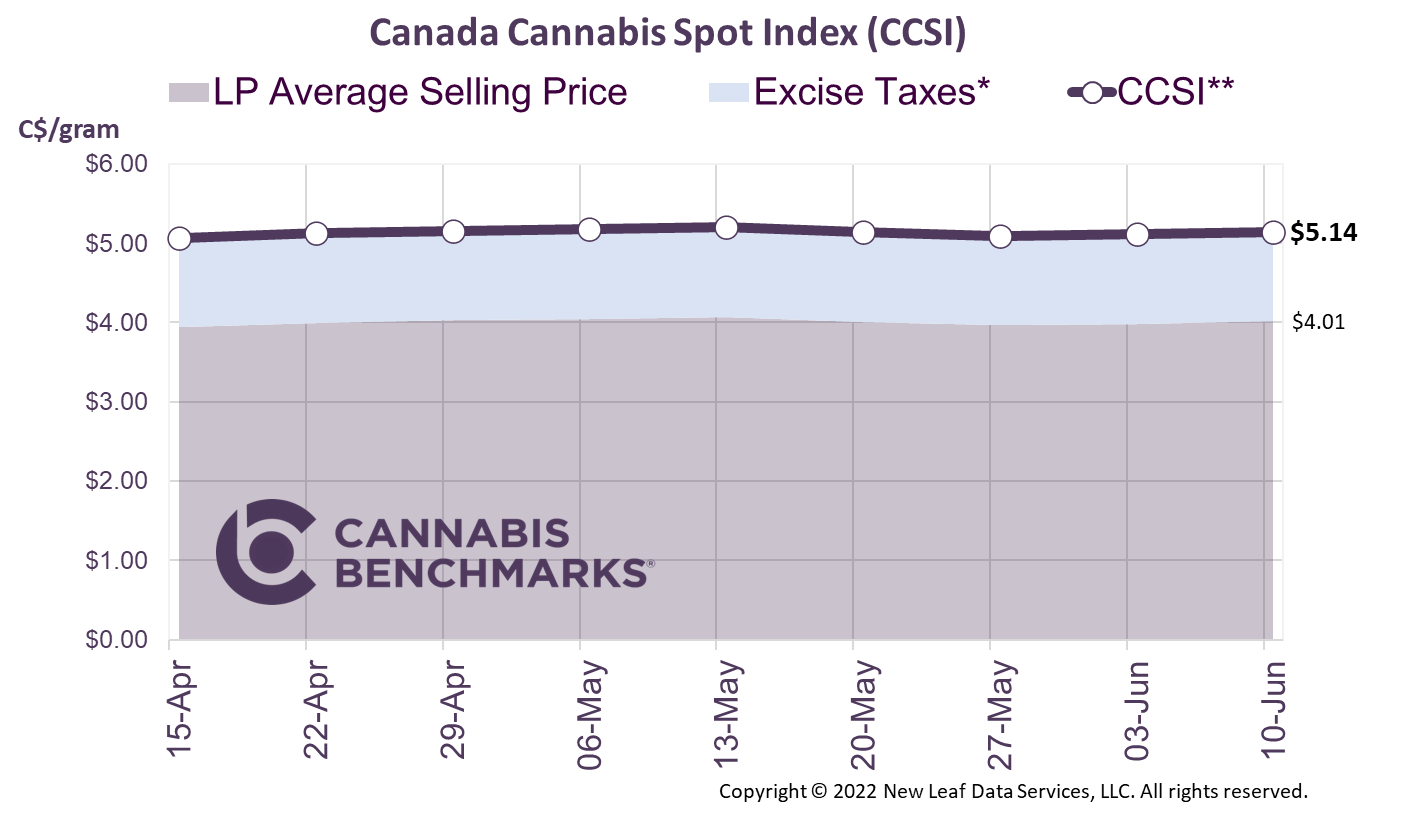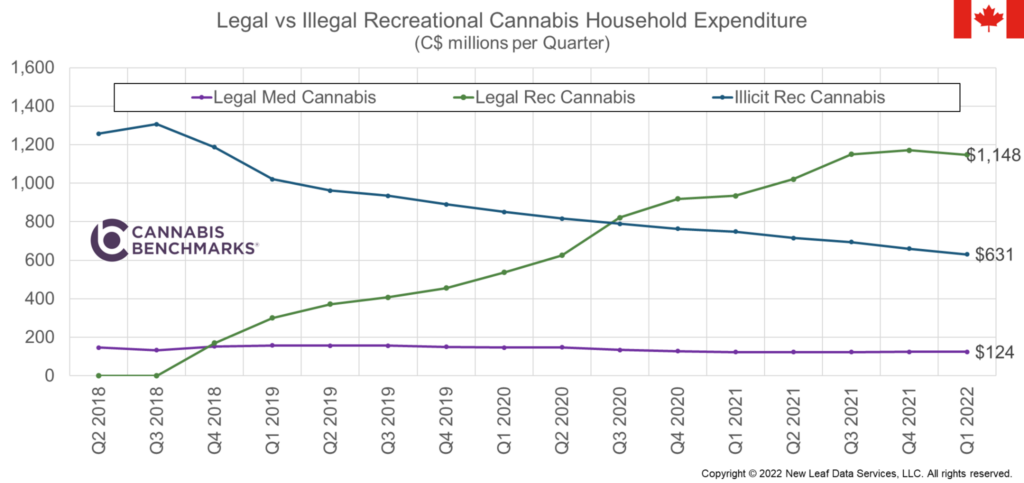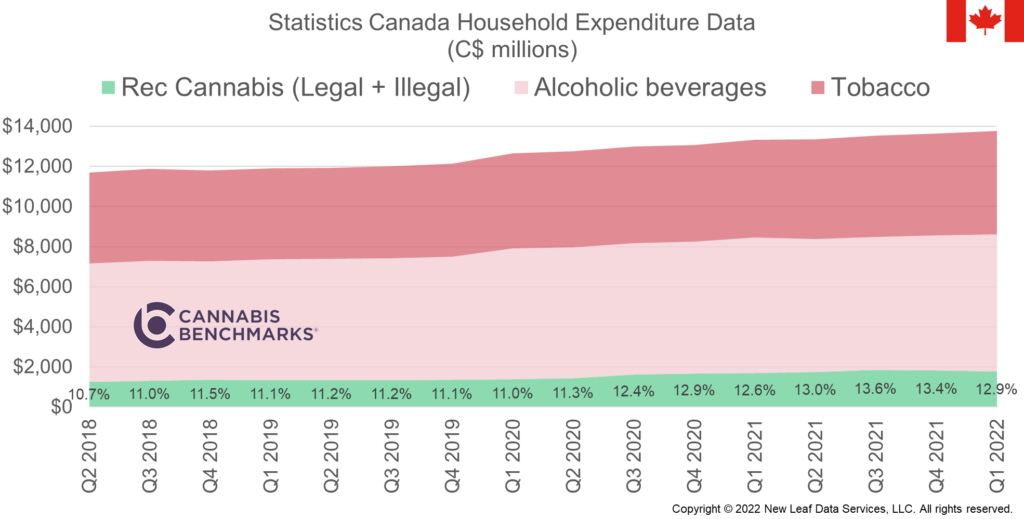

*The provincial excise taxes vary. Cannabis Benchmarks estimates the population weighted average excise tax for Canada.
**CCSI is inclusive of the estimated Federal & Provincial cannabis excise taxes..
The CCSI was assessed at C$5.14 per gram this week, up 0.7% from last week’s C$5.11 per gram. This week’s price equates to US$1,850 per pound at the current exchange rate.
Include your weekly wholesale transactions in our price assessment by joining our Price Contributor Network
If you have not already done so, we invite you to join our Price Contributor Network, where market participants anonymously submit wholesale transactions to be included in our weekly price assessments. It takes two minutes to join and two minutes to submit each week, and comes with loads of extra data and market intelligence.
This week we examine household expenditure data issued quarterly by Statistics Canada. To start, we look at the rise of the legal recreational cannabis market across Canada. As seen in the chart below, in Q1 2022 the estimated household expenditure for legal recreational cannabis was nearly 82% greater than that spent in the illicit market.More Canadians are choosing to purchase cannabis through regulated legal channels as awareness and accessibility continue to expand. Also fueling that trend is the drop in prices, as new supplies from legal indoor and outdoor cultivation operations became available and make products from licensed businesses more price competitive with those of illegal sellers.
In Q1 2022, recreational cannabis expenditures grew 23% to C$1,148M and illicit cannabis expenditures dropped by 16% to C$631M as compared to the same time frame in 2021. We also note that expenditure for medical-use cannabis stayed relatively flat at C$124M. Medical cannabis now makes up only 6.5% of the total cannabis bought in Canada. Total expenditure on cannabis was C$1.78B for the quarter or C$19.7M per day.

Next, we look at cannabis purchasing in comparison to that of alcohol and tobacco. As we have noted in the past, major alcohol and tobacco companies have made significant investments in large cannabis businesses over the last few years, in part as a hedge to ensure they do not lose out on the latent demand for cannabis that is being captured gradually by legal businesses. The data released by Statistics Canada for Q1 2022 is starting to show that alcohol and tobacco sales are holding steady relative to the emerging cannabis sales. Even though total spending on alcohol, tobacco, and cannabis continues to rise, the portion spent on cannabis has been close to 13% for the past six quarters. This is not the best news for the cannabis industry, which has been hoping to take some of the finite consumer spending power from these recreational categories.


